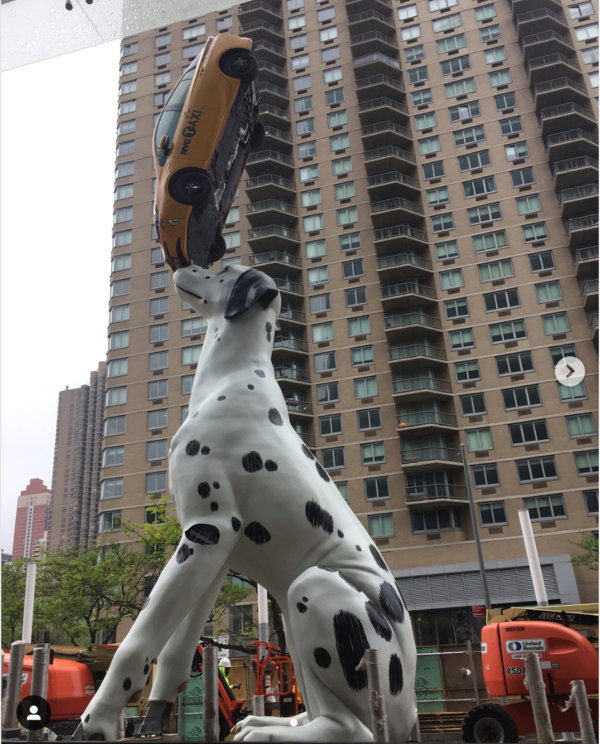
In the category of “there’s something you don’t see everyday” was last year’s installation of a Donald Lipski piece of public art, an enormous statue of a Dalmatian balancing an actual taxi cab on its nose. The Toyota Prius cab was donated by the car manufacturer, and while it is missing an engine, transmission, and seats, the windshield wipers and lights function and will be activated when it rains
Including the cab, “Spot,” a female puppy, measures 38-foot-tall. She was built with fiberglass and steel beams in a large Wisconsin factory before being trucked into the city, her forelegs arriving separately. The entire piece was fitted together on site, a crane ultimately lifting the monumental sculpture into place. The whimsical structure now serves as a lighthearted greeting for patients of the new Hassenfeld Children’s Hospital. The display is also a nod to the Hassenfeld family, founders of the Hasbro toy company, and major donors for the new hospital. Public Art Services posted a time-lapse video of the process on its Instagram page:
Very cool.
And now we move onto a factoid in the category of, “Huh, who knew.”
Most of us know that the Dalmatian is known as the “coach dog,” and in an article written for the Newton Bee, our friend, Lisa Peterson, asked, “Coach Dog vs Carriage Dog – Do You Know The Difference?” There is one, and we encourage you to read Lisa’s piece to learn what it is. But did you also know that the word “coach” has its origins in Hungary?
During the reign of King Matthias Corvinus in the 15th century, wheelwrights (men who built and repaired wooden wheels) in the Hungarian village of Kocs began building horse-drawn carts that featured steel-spring suspension. This fast, light-weight cart came to be known as the “cart of Kocs” (pronounced koch) or kocsi in Hungarian, and it spread all over Europe. The word morphed into the English word coach, while in Germany, it was Kutsche, and coche in Spanish and Portuguese. After Dalmatians demonstrated an affinity for horses and for accompanying horse-drawn carriages, they became known as “coach dogs.”
It’s a tenuous, if not a tortured connection between Dalmatians and Hungary, but we prefer to think of it as six degrees of separation, the idea that people and concepts are six or fewer connections away from each other.
